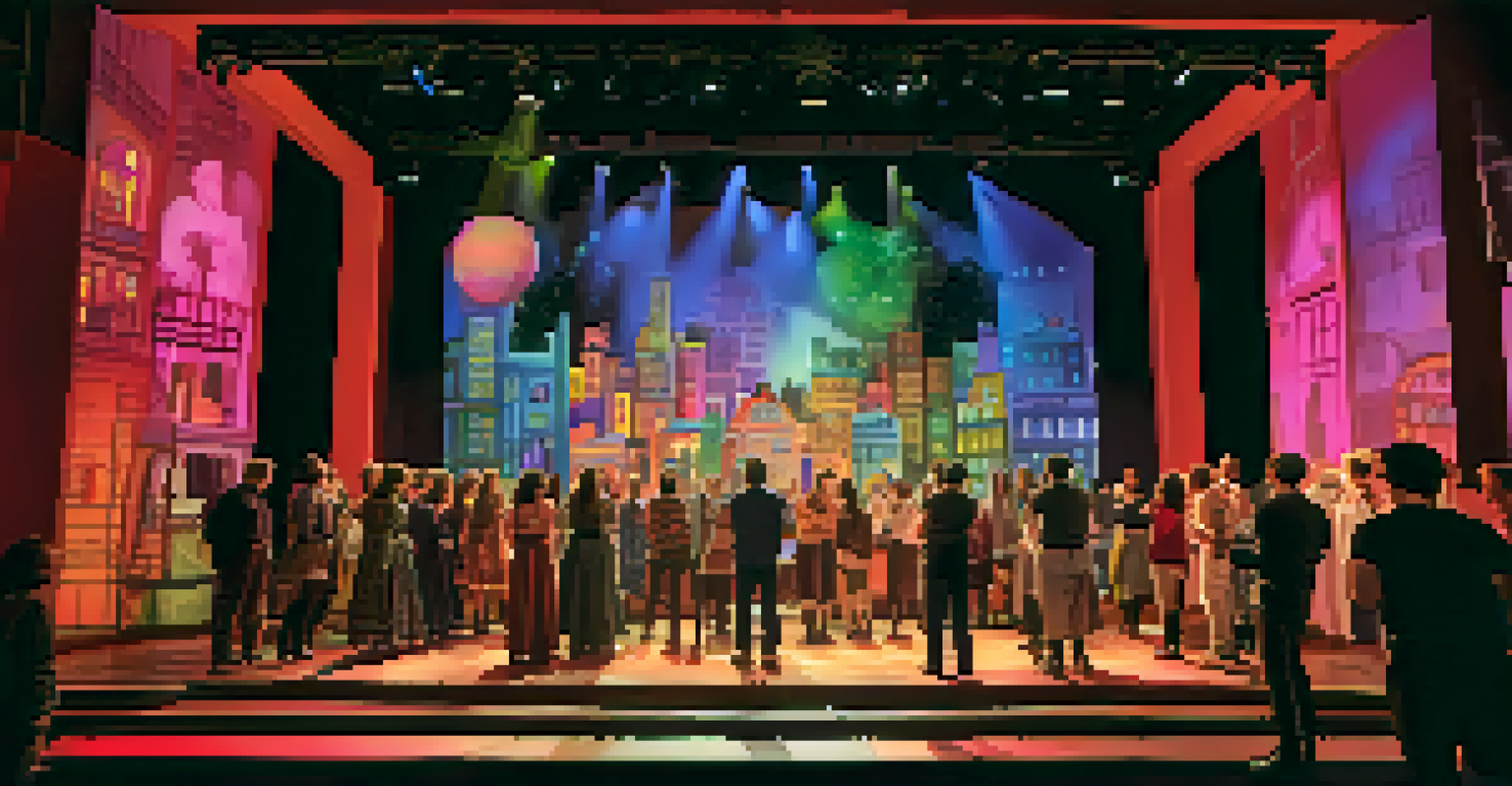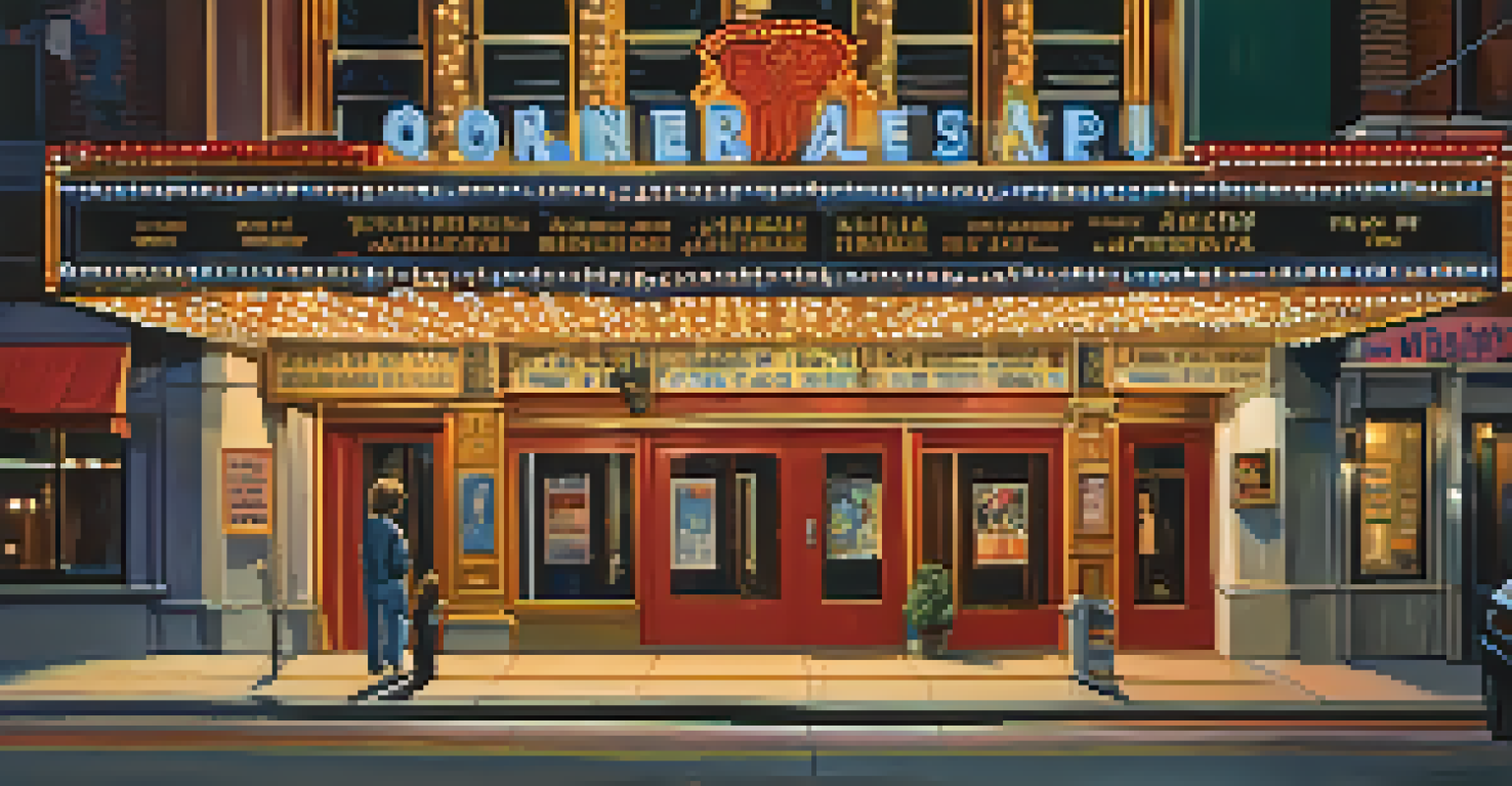How Off-Broadway Productions Challenge Mainstream Theater

The Unique Charm of Off-Broadway Theaters
Off-Broadway theaters offer an intimate experience that is often missing in larger venues. With smaller audiences, performers can connect more deeply with viewers, creating a unique atmosphere for storytelling. This intimacy fosters a sense of community, where audiences feel more involved in the performance.
The theater is a living thing, and it requires the participation of all the people who are involved in it. It isn’t about the playwright or the director or the actors; it’s about the audience and the performers creating a shared experience.
Moreover, the cozy settings of Off-Broadway productions allow for experimental staging and innovative design choices. Without the constraints of large budgets, creative teams can think outside the box, leading to imaginative interpretations of classic tales or entirely new narratives. This flexibility is a key reason why Off-Broadway has become a breeding ground for fresh ideas.
For example, a recent Off-Broadway production reimagined a well-known story with a modern twist, engaging audiences in unexpected ways. Such inventive approaches challenge conventional storytelling, making each performance a memorable experience.
Diverse Voices and Perspectives in Off-Broadway
One of the most significant contributions of Off-Broadway productions is their commitment to showcasing diverse voices. These theaters often prioritize stories from underrepresented communities, offering a platform for narratives that may be overlooked in mainstream theater. This inclusivity enriches the overall theatrical landscape.

By featuring playwrights, actors, and directors from various backgrounds, Off-Broadway productions challenge the status quo. They encourage audiences to engage with perspectives that reflect a wider array of human experiences. This shift not only broadens the narrative scope but also fosters empathy among viewers.
Intimacy in Off-Broadway Theater
Off-Broadway theaters create a close-knit environment that fosters deeper connections between performers and audiences.
For instance, a recent Off-Broadway show told the story of a marginalized group, shedding light on societal issues that resonate with many but are rarely addressed on larger stages. Such productions not only entertain but also educate, prompting important conversations within the community.
Innovative Storytelling Techniques in Off-Broadway
Off-Broadway productions often push the boundaries of traditional storytelling through innovative techniques. From immersive theater to multimedia integrations, these performances engage audiences in dynamic ways. This experimentation can lead to a more profound emotional connection with the material.
The best way to find yourself is to lose yourself in the service of others.
Additionally, the freedom from commercial pressures allows Off-Broadway creators to explore unconventional narratives. They can take risks that mainstream theaters might shy away from, resulting in groundbreaking works that challenge audience expectations. This daring approach is a hallmark of the Off-Broadway experience.
For example, a recent production employed virtual reality elements to enhance the storytelling, drawing viewers into the narrative world like never before. Such creative endeavors not only captivate but also inspire other theater artists to think differently about their own work.
Accessibility and Affordability of Off-Broadway
One of the defining features of Off-Broadway is its accessibility. Ticket prices are generally more affordable than those of mainstream Broadway shows, making theater more reachable for a broader audience. This democratization of theater is vital for fostering a love for the arts within diverse communities.
Moreover, many Off-Broadway theaters are located in accessible urban areas, allowing for easier transportation and attendance. This convenience encourages more people to experience live theater, breaking down barriers that often discourage potential theatergoers. The result is a thriving audience that reflects the community's rich diversity.
Showcasing Diverse Voices
These productions prioritize underrepresented stories, enriching the theatrical landscape and promoting empathy among viewers.
For instance, some Off-Broadway theaters offer pay-what-you-can nights, ensuring that everyone, regardless of their financial situation, can enjoy a night at the theater. Such initiatives cultivate a sense of inclusion and belonging within the arts.
The Role of Off-Broadway in Cultivating New Talent
Off-Broadway productions serve as a vital training ground for emerging artists. Many actors, writers, and directors begin their careers in these theaters, honing their craft in a supportive environment. This nurturing atmosphere allows for creativity to flourish and experimentation to thrive without the fear of failure.
As a result, Off-Broadway is often where groundbreaking talent is discovered before making their way to mainstream stages. The close-knit community fosters mentorship opportunities, encouraging established artists to guide newcomers. This exchange of knowledge is essential for the growth of the theater industry.
For example, a now-famous playwright got their start in an Off-Broadway theater, where they produced their first major work. This opportunity not only launched their career but also enriched the theatrical world with their unique voice.
Cultural Commentary and Social Issues in Off-Broadway
Off-Broadway productions are often at the forefront of cultural commentary. Many works tackle pressing social issues, prompting audiences to reflect on the world around them. This focus on relevant themes helps keep the conversation about societal challenges alive and encourages collective action.
By addressing topics like inequality, identity, and environmental concerns, Off-Broadway creates a space for dialogue and reflection. These productions often resonate with audiences on a personal level, allowing them to see their own experiences reflected in the stories presented on stage.
Nurturing New Talent
Off-Broadway serves as a vital training ground for emerging artists, allowing them to develop their craft in a supportive setting.
For instance, an Off-Broadway show might explore the complexities of immigration, facilitating discussions among audience members long after the curtain falls. This engagement fosters a deeper understanding of societal challenges, ultimately encouraging positive change.
The Future of Off-Broadway and Mainstream Theater
As Off-Broadway continues to innovate, its influence on mainstream theater grows stronger. Many successful Broadway productions have emerged from Off-Broadway roots, showcasing the importance of this artistic movement. The relationship between the two realms is symbiotic, with each learning from the other.
Additionally, the rise of streaming platforms and digital content has opened new avenues for Off-Broadway productions. Artists can reach wider audiences beyond the physical theater, sharing their work with those who may not be able to attend in person. This shift could redefine how we think about theater in the future.

Looking ahead, the challenge remains to maintain the authenticity and creative freedom that defines Off-Broadway while navigating the commercial realm of mainstream theater. Balancing these elements will be crucial for the continued evolution of the theatrical landscape.